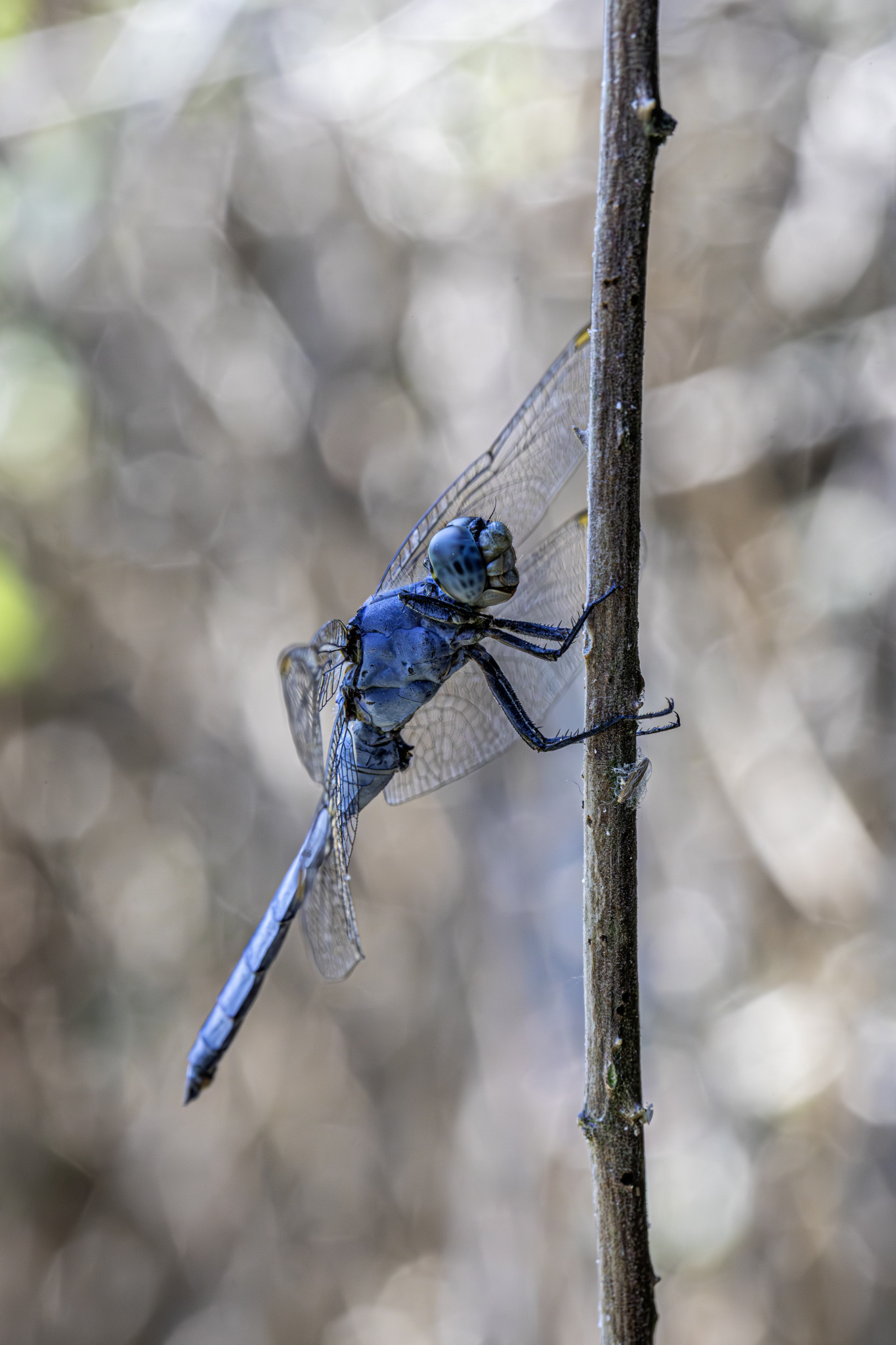The Southern Skimmer (Orthetrum brunneum) is a striking species of dragonfly belonging to the family Libellulidae. Known for its distinctive blue coloration and agile flight, this dragonfly is a fascinating insect found in various parts of Europe and North Africa.
Physical Description
The Southern Skimmer is a medium-sized dragonfly, with males typically measuring about 40 to 50 mm (1.6 to 2.0 inches) in length. Males are easily recognizable by their powdery blue coloration on the abdomen and thorax, which gives them a frosted appearance. Females and immature males, on the other hand, are more subdued in color, usually displaying a yellowish-brown or olive hue with darker markings. Both sexes have large, multifaceted eyes and transparent wings with a characteristic dark pterostigma (a small, pigmented area on the wing).
Distribution and Habitat
Orthetrum brunneum is widely distributed across southern and central Europe, extending into parts of North Africa and western Asia. This species favors warm, sunny habitats with slow-flowing or still freshwater bodies, such as ponds, lakes, ditches, and slow rivers. It is often found in areas with abundant aquatic vegetation, which provides ideal conditions for breeding and hunting.
Behavior and Diet
The Southern Skimmer is an agile and skilled hunter. It preys on a variety of small insects, including mosquitoes, flies, and other dragonflies. Adults are often seen patrolling their territories or perched on vegetation near water bodies. They use their excellent vision and rapid flight to catch prey mid-air.
Males are territorial and can be observed defending their chosen stretch of water from rivals. They establish perches from which they launch to chase intruders or potential mates. Females are less territorial and primarily visit these territories for mating and oviposition.
Reproduction and Lifecycle
The breeding season for the Southern Skimmer occurs during the warmer months, from late spring to early autumn. Mating involves a unique “wheel” position, where the male grasps the female by the head while she curves her abdomen to receive sperm.
After mating, females lay their eggs in water. They do so by dipping the tip of their abdomen into the water’s surface while in flight. The eggs hatch into aquatic larvae, known as nymphs, which live underwater for several months to over a year, depending on environmental conditions. Nymphs are voracious predators, feeding on a variety of aquatic invertebrates. They undergo several molts before emerging as adults through a process called metamorphosis.
Conservation Status
The Southern Skimmer is not currently listed as threatened or endangered. It is considered a species of least concern due to its wide distribution and adaptability to different freshwater habitats. However, like many aquatic insects, it faces threats from habitat destruction, water pollution, and climate change, which can impact local populations.
Importance in Ecosystems
The Southern Skimmer plays a crucial role in maintaining the health of its ecosystem. As both a predator and prey species, it helps control populations of smaller insects, including pests like mosquitoes. Additionally, its presence indicates healthy, unpolluted water bodies, making it an important bioindicator species.
Summary
The Southern Skimmer (Orthetrum brunneum) is a captivating dragonfly species known for its distinctive blue coloration and dynamic hunting behavior. Found across southern and central Europe and parts of North Africa, it thrives in warm, vegetated freshwater habitats. Its role in controlling insect populations and indicating water quality underscores its ecological significance. Conservation efforts are essential to ensure the continued survival and health of this vibrant species and the ecosystems it inhabits.behavior, and important role in freshwater ecosystems.
Views: 322
Subscribe to the newsletter:
